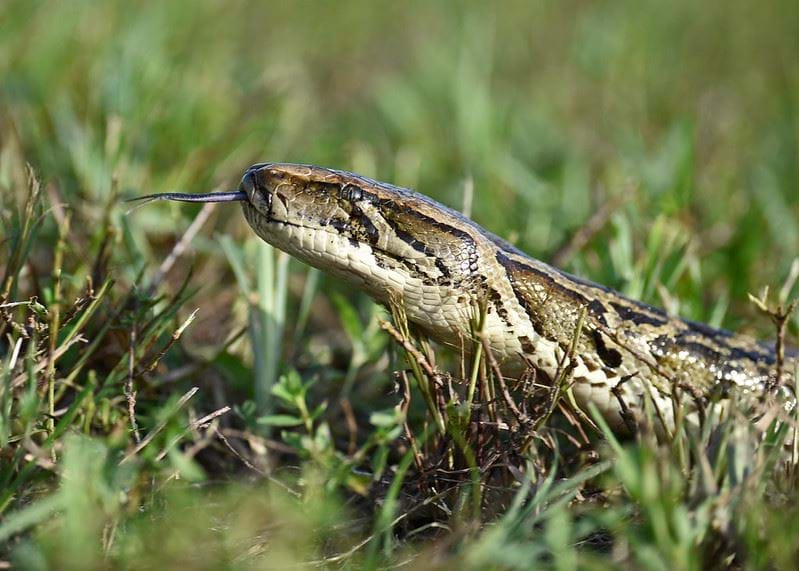Python Information
Introduction
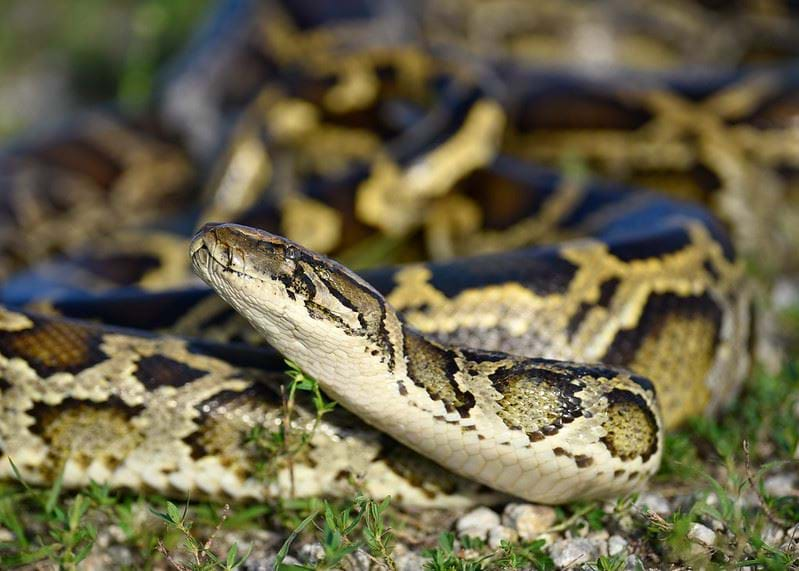
Image courtesy of the Florida Fish and Wildlife Conservation Commission
Burmese pythons (Python molurus bivittatus) are large constrictor snakes native to Southeast Asia that have been introduced to southern Florida through the accidental escape or intentional release of captive animals. The Florida Python Control Plan (FPCP) is a Florida state plan that land-managing organizations may choose to adopt, and it represents the collaborative efforts of 15 Federal, State, and local agencies, tribes, and one non-governmental organization (NGO) to address the need for a unified, interorganizational plan for control of invasive Burmese pythons.
Species Information

Image courtesy of the Conservancy of Southwest Florida
Length: Burmese pythons are large snakes, with multiple wild-caught pythons removed from Florida exceeding 18 feet in total length; however, most observations are of smaller pythons. Wild Burmese pythons found in their native habitat can grow to sizes much larger than any native snake found in the United States (Powell et al. 2016).
Nest size: Clutch size varies according to the size of the female, and a 4 meter python may have a clutch size of approximately 40 eggs (Willson et al. 2014). Females may lay clutches in consecutive years (Bartoszek unpublished), but average clutch frequency has not yet been estimated.
Detectability: Burmese pythons are hard to find due to their cryptic coloration and secretive behaviors, and their low detection probability is a major challenge to effective python control and research.
Detection probability, concerning detection of an individual python, is the probability that an individual animal is found if present.
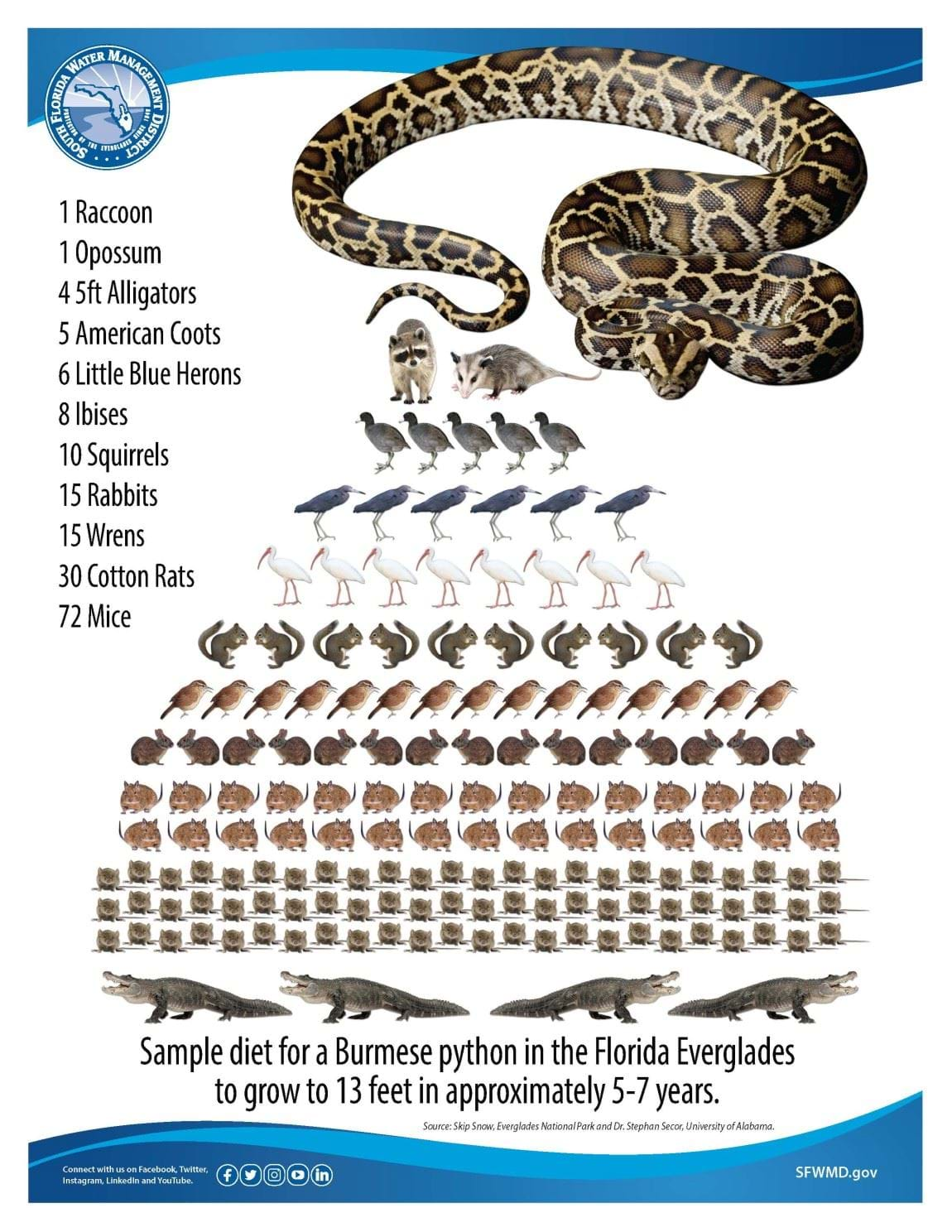
Image courtesy of the South Florida Water Management District
Diet: Burmese pythons are non-venomous and kill their prey by constriction. Burmese pythons in Florida have been documented to prey on a wide range of mammal and bird species, and less commonly two species of reptiles (Snow et al. 2007a; Dove et al. 2011; Dove et al. 2012; Romagosa unpublished).
This infographic shows the hypothetical diet of a Burmese python in the Florida Everglades growing to adult size (approximately 13 feet) over the course of 5-7 years. The animals represented in the chart show the generalist diet of the python and its ability to impact multiple species in that timeframe.
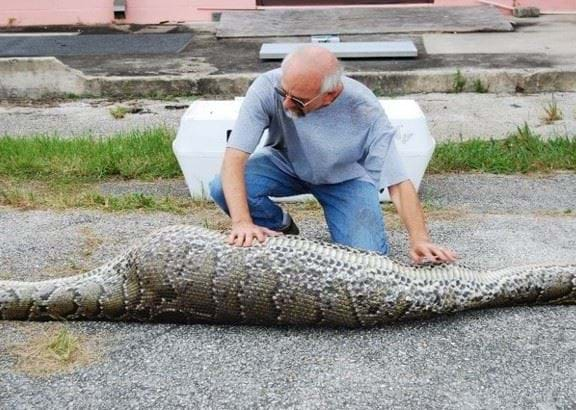
Image courtesy of National Parks Service
Impacts: Burmese pythons in Florida are problematic because of the significant negative impacts they have on the environment, primarily through depredation of native wildlife, and there are several lines of evidence that pythons are causing these negative effects. Compared to years prior to the python invasion, observations of many small- and medium-sized mammals are significantly reduced, in some cases by 90% or more, in areas where pythons now occur (Dorcas et al. 2012).
Pythons cause direct impacts to native species when they reduce population sizes through depredation, but pythons are also indirectly impacting other species or populations. These indirect impacts can be similarly profound with recent research indicating that: 1) invasive parasites, brought by pythons from Asia, now infect native snakes, often at higher infection intensities than in pythons (Miller et al. 2018, 2020); 2) turtle-nest depredation has decreased in areas where pythons occur because raccoons, a primary nest predator of turtles, are now rare in these areas (Willson 2017); and 3) humans may be more likely to get Everglades Virus, a zoonotic disease, because pythons have reduced mammal diversity so that now rodents, the primary host of the virus, are more often fed on by the mosquito vectors (Hoyer et al. 2017).
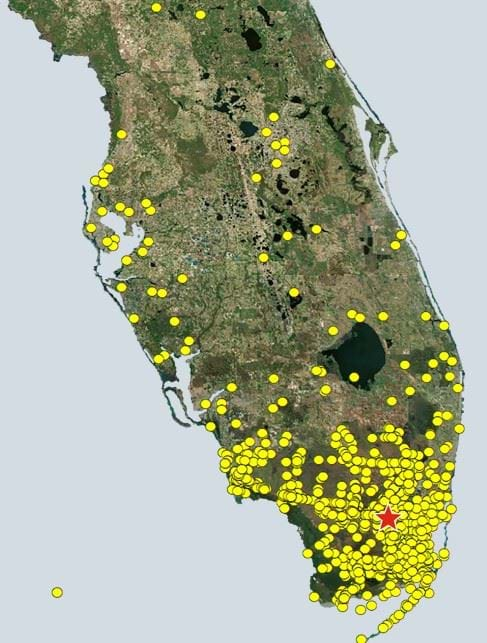
Maps
You can find where Burmese Pythons have been reported in the United States with this interactive map. To view the map, click on "Distribution Maps" > "Wildlife" > "Reptiles" > "Burmese python".
